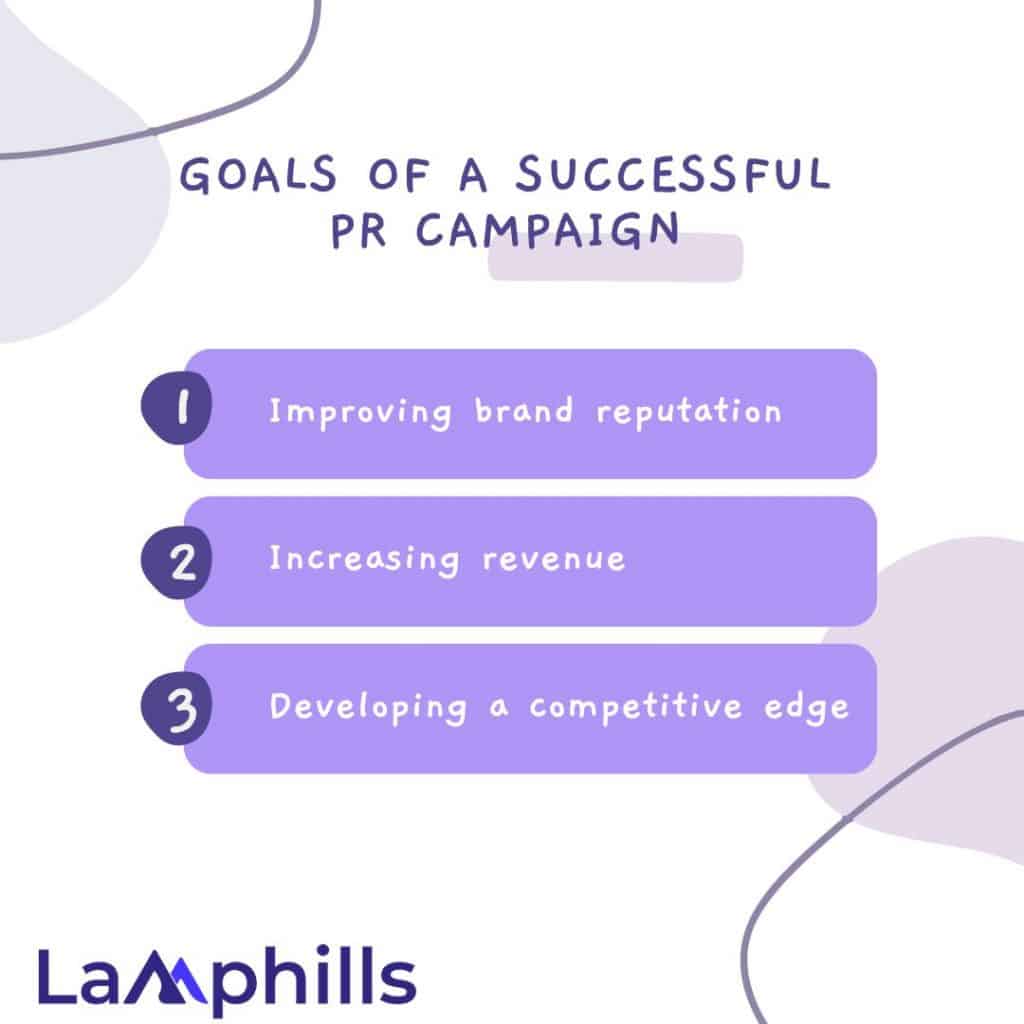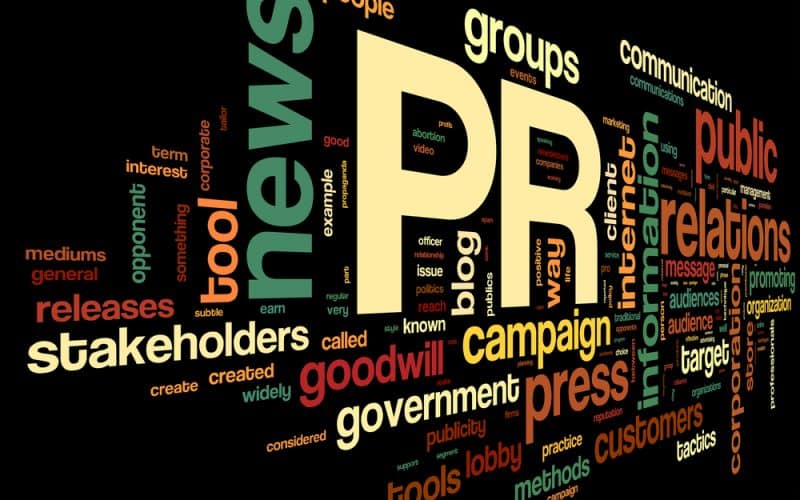Do you recall the first time you saw a public relations campaign that truly captured your attention? For me, it was the premiere of Nike’s “Just Do It” campaign. The sheer strength and simplicity of that statement elevated Nike to the status of cultural icon, dominating the spotlight in a way that few businesses have ever done. As someone who has spent years studying the complexities of public relations, I’ve discovered that great brands employ certain strategies to reach this level of success. A recent study by Cision found that journalists receive an average of 50 pitches per day. So, how do you cut through the noise and land your brand in the coveted spotlight? In this article, I’ll reveal these PR campaign secrets and show you how to control the spotlight like the top brands in the field.
PR Campaigns
A successful public relations campaign involves more than just press releases and media attention. It requires strategic preparation, narrative, and a thorough understanding of your target audience. According to the Public Relations Society of America (PRSA), an effective public relations campaign can improve brand image, gain market share, and boost consumer loyalty. But how do leading brands accomplish these results?
Key Takeaways
- Successful PR campaigns involve strategic planning, compelling storytelling, and leveraging multiple channels to reach and engage the target audience.
- Improving brand reputation, increasing revenue, and developing a competitive edge are key goals of effective PR campaigns.
- Types of PR campaigns include crisis management, product launches, and corporate messaging, each designed to achieve specific objectives.
- Executing a successful PR campaign requires determining goals, identifying the target audience, brainstorming, gathering market intelligence, choosing the right channels, and thorough execution.
- Data and analytics play a crucial role in PR campaigns by assessing effectiveness, understanding audience engagement, and optimizing strategies based on insights.
The Key Elements of a Successful PR Campaign
#1. Strategic Planning
Top brands do not leave public relations campaigns to chance. They devote time to thorough preparation, establishing defined objectives, and determining their target audience. This entails conducting extensive research to understand the media ecosystem, audience behavior, and industry trends.
Starbucks, for example, did more than merely issue a news statement to demonstrate its commitment to sustainability. The company devised a comprehensive strategy that included social media ads, collaborations with environmental organizations, and shop promotions.
#2. Compelling Storytelling
Every successful public relations campaign is built on a compelling story. They evoke an emotional response from the viewer, making the brand more approachable and memorable. Successful businesses understand how to create storylines that resonate with their intended audience.
Dove’s “Real Beauty” campaign employed real women rather than models to promote self-acceptance and confidence. This storytelling strategy not only set Dove apart from its competitors but also prompted a global debate about beauty standards.
#3. Leveraging Multiple Channels
A single press release is insufficient to capture the limelight. Top brands employ both conventional and digital media to spread their message. This covers social media, influencer collaborations, podcasts, webinars, and more.
For example, when Apple introduces a new device, it does not rely only on technology blogs. The company uses social media teasers, high-profile events, and collaborations with influencers to generate hype and attract a larger audience.
What are the Goals of a Successful PR Campaign?

Often, the primary purpose of a successful public relations campaign is to influence public opinion. Successful PR campaigns can have a range of objectives, such as promoting and highlighting a certain brand value, such as sustainability, or rebuilding your company’s reputation following a disaster.
#1. Improving brand reputation
A typical goal of successful public relations strategies is to boost brand reputation. PR efforts are especially beneficial for new and rising enterprises that are unfamiliar to their target audience. They help stimulate attention and establish a positive brand reputation.
Press releases, media coverage, interviews, and third-party endorsements are all components of a PR campaign that can help create credibility, stimulate interest, and foster positive relationships with various audiences. In reality, an “always-on” reputational management style serves as the cornerstone for a modern public relations strategy that produces outcomes.
#2. Increasing revenue
While PR strategies are largely focused on metrics like as impressions, engagement, website traffic, media mentions, search engine optimization improvements, and so on, successful PR campaigns can also boost income. By attracting attention, developing relationships with your target audiences, and raising awareness, your brand’s exposure should improve, resulting in more sales. Trust and credibility influence a consumer’s purchasing choice significantly, thus having your brand discussed positively by trustworthy professionals regularly is critical.
#3. Developing a competitive edge
PR efforts are intended to be eye-catching, visually appealing, emotional, or compelling. These are highly imaginative ads that may feature a unique tagline or a memorable headline. PR efforts help you stand out by drawing a clear gap between your business and competitors. PR campaigns are not only entertaining and engaging, but they are also designed to win over the hearts and minds of your target customers. When your customer considers acquiring your goods or services, you want to be first and foremost in their minds, ahead of competitors.
Different Types of PR Campaigns
There are various types of public relations campaigns, and each can be used to achieve distinct aims.
#1. Crisis Management
While every organization would prefer to avoid a crisis management public relations campaign, it is one of the most popular and common techniques. In a crisis management public relations campaign, your business aims to modify public perception of a potentially negative event that poses a threat to your reputation.
#2. Product launch
The debut of a product or service is another common PR campaign. A product launch PR campaign is useful for generating positive media coverage, creating social media buzz, and capturing consumers’ attention while introducing a new product to the market. Ideally, roughly six months before product launches, your company should begin developing key messaging, press releases, collateral, and visual imagery. PR teams may approach the media for exclusive opportunities or popular influencers in the industry to promote the new product.
#3. Corporate messaging
Another common sort of public relations campaign is the corporate messaging push. For essential brand values and narratives, your company may want to undertake a campaign to share that vision with various populations.
Successful PR Campaign Examples
The best public relations efforts are memorable, so check out some examples below that you may be familiar with.
#1. Apple’s Product Launch
Apple’s annual introductions of new iPhone models, Mac products, and other items are well-known examples of product launch campaigns. Apple is well-known for staging grand launches to reveal revolutionary goods such as the Vision Pro virtual reality headset.
#2. BP Crisis Management Campaign
In 2010, BP’s offshore drilling unit exploded and sank in the Gulf of Mexico, resulting in the greatest marine oil leak in history and killing and wounding several people. It was not simply a natural tragedy, but it also had a significant negative impact on BP’s reputation following the oil spill. BP undertook a public relations campaign to rehabilitate the company’s image. This campaign involved sponsored advertising, grants to establish neighborhood relationships, and more.
How to Create a Successful PR Campaign
Now that you have a better understanding of what a PR campaign is, let’s talk about how to develop one.
- Determine what you want to accomplish.
- Choose your target audience.
- Brainstorm
- Collect market intelligence.
- Choose your channels.
- Sense check your idea.
- Execute your PR campaign.
- Follow up.
- Measurement
#1. Determine what you want to accomplish
Before you begin organizing your public relations campaign, you must first determine what results you want to achieve. Do you want to improve sales and leads? How can we improve brand recognition, value, and valuation? Or do you prioritize partner engagement and recruiting?
Deciding what goal you want to attain first influences the PR strategy you should employ. In the preceding section, we discussed different objectives that you might want to consider setting as your aim.
When creating your public relations goals, keep in mind how you will measure success during campaign preparation. Your leadership team does not want a list of links to PR clips and social media snapshots; instead, they want to know how the promotion helped the company achieve its objectives.
#2. Choose Your Target Audience
If you want to raise brand awareness for your new diaper line, you generally won’t market it to single males in their early twenties. To achieve your objectives, you must first identify your target audience.
So, when developing your communication plan and public relations strategy, consider who you want to target. Your public relations team will most likely need to adapt its strategies depending on the audience it intends to target.
#3. Brainstorm
Once you’ve determined what you want to do, you can consider the best strategy to attain your objectives.
Brainstorming is a crucial aspect of formulating and implementing a public relations campaign. To organize an efficient brainstorming session, bring together people from varied backgrounds and explain what you want to achieve.
Conduct thorough brainstorming by soliciting a large number of ideas and examining how they relate to one another. Then, give it a day or so to settle before re-approaching with any missed items.
Consider these questions:
- What’s the message?
- Who is the message intended for?
- Which platforms will spread the message?
- What is the message, and how will you convey it?
In addition to a brainstorming session, you may wish to gather market intelligence on your target audience and competitors. Try conducting a survey to gauge how your audience feels, or consult a subject matter expert.
#4. Collect market intelligence
During the campaign’s early stages, it is a good idea to conduct industry research and market intelligence. This information can be utilized to assess how your tale fits into broader industry trends, whether portions of the story to embrace or reject, and how to deal with any potential negative feedback. It is also a good idea to keep track of what the media is interested in.
Tip: When writing a press release, present the announcement as a tale. If you want journalists to cover your company’s news, help them understand why it’s newsworthy by writing a title for your press release that reads like a news story that the general public would be interested in, rather than a company news bulletin post.
Conducting research, such as a social media analysis, competitor analysis, or digital media analysis, may benefit the campaign and marketing efforts.
Other things to research include;
- Competitors’ websites
- Competitor campaigns include SEO, social media, and PPC.
- Competitor LinkedIn pages
#5. Set up Google Alerts to monitor your competitors
To gather all of this information, you may need to enlist stakeholders from other departments, such as marketing and sales. These stakeholders could assist shape and testing the core messages and campaign strategy.
#6. Choose your channels
Your beautifully crafted message will be useless if no one hears it.
Will you be issuing a press release or hosting a news conference? Do you want to employ influencers to convey your message or just your company’s branded social media accounts? The channels that your target audience uses the most should be carefully considered during the campaign design phase.
Again, if you’re marketing your company’s new diaper line, try using a combination of online and offline approaches to reach individuals before and during their shopping trips.
When establishing the strategy, your public relations team may want to consider how the campaign fits with the marketing team’s SEO strategy, social media strategy, and other digital marketing channels.
Unsurprisingly, most press releases are not SEO-friendly. Understanding the influence of SEO on your public relations campaign does not require you to be a technical expert or a search engine professional. You may enhance your brand’s reach, create more organic traffic, and increase the authority of your site (and brand) by increasing your PR campaign using semantic SEO and research-driven link-building.
#7. Sense check your idea
Before beginning to execute and promote the public relations campaign, convey the ideas to persons who are not involved in the project. How often have you seen an advertisement and wondered, “How did someone approve that?” Chances are, not many people were involved in the review process.
To avoid a public relations crisis, consider asking your journalist friends and influencers what they think. Influencers have valuable insights into how the social media world will perceive your message.
Most crucial, get feedback early on in the process. This can help you notice something obvious or prevent something you didn’t realize was tone-deaf. Make sure that every aspect of the campaign is consistent with the brand and corporate values.
Consider your target audience, and ask yourself:
- What’s significant to them?
- How will this campaign affect their feelings?
- What are their pain points, and how can you address them?
#8. Execute your PR campaign
Before your public relations team pushes the “go” button, double-check that every detail is correct and that all assets are on-brand and free of typos and other errors. Ensure that each piece of data or set of facts included is correct. This is the chance to make any modifications before the official launch.
Now it’s time for tactical execution. Give yourself at least 10 days, and even longer for some public relations initiatives. Consider current events, competition information, and even holidays. Expect the unexpected and give yourself some wiggle room. This flexibility to make last-minute alterations is critical to campaign success.
Make sure you have any additional information ready and the authority to transmit it. It is critical to capitalize on every single call, therefore keep communication channels open and be prepared to answer any inquiry.
#9. Follow up
Prepare a follow-up plan for journalists. If you find that your story has been bumped or has not yet been covered, be prepared to explain why the information is still newsworthy and will continue to be so in the coming days and weeks. It is usual for journalists to receive a large number of pitches, so make sure yours sticks out.
Plan on sending a follow-up email 3-4 days following the initial correspondence. Include a link to a customer review or to data or research that demonstrates the product’s continuous worth. If it was an event, provide images. No campaign is ever one-and-done, so develop a follow-up strategy for more publicity.
#10. Measurement
After your PR campaign is complete, it’s time to bundle your success and report on all of your KPIs and analytics. Write a story about what happened and celebrate with a blog post. Take your time writing out every aspect and describing the campaign’s success.
- Take note of metrics like these:
- Sales numbers
- Media Inquiries
- Changes in Social Media
- Attendance figures
Also, prepare a mass report that includes demonstrated KPIs, objectives, and areas for improvement. Look for examples that highlight the campaign’s significance and compose an award entry.
I’ve had the honor of working on several public relations initiatives throughout my career. One notable campaign was for a tech business looking to launch a new application. We achieved considerable media coverage and user interaction by focusing on a specific target demographic, producing an engaging story, and utilizing numerous media platforms.
The Function of Data and Analytics In Successful PR Campaigns
In today’s digital age, data and analytics are critical components of public relations strategies. Brands use data to assess campaign efficacy, understand audience involvement, and make educated decisions. Google Analytics, social media insights, and media monitoring software can provide useful insights for refining and optimizing public relations tactics.
Another example is a nonprofit organization dedicated to raising awareness about climate change. We were successful in amplifying their message and increasing public support by collaborating with influencers, developing engaging social media content, and conducting community events.
The media relationship management template will help you build long-lasting connections.
Building solid ties with journalists is critical for long-term public relations success. You can use the Media Relationship Management Template to create a strategic approach to nurturing these relationships. Here’s how;
- Identify Relevant Journalists: Look for journalists who cover your industry and understand your target audience.
- Personalize Your Outreach: Do not send generic pitches. Tailor your communication to highlight the journalist’s specific interests and the value your story provides to their audience.
- Offer unique Content: Incentivize journalists to cover your story by offering unique interviews, behind-the-scenes access, or previously available data.
By following the Media Relationship Management Template, you can establish trust and long-term connections with journalists, increasing your chances of receiving positive media coverage for your brand.
The Role of Data and Analytics in PR Campaigns
In today’s digital age, data and analytics are critical components of public relations strategies. Brands use data to assess campaign efficacy, understand audience involvement, and make educated decisions. Google Analytics, social media insights, and media monitoring software can provide useful insights for refining and optimizing public relations tactics.
Conclusion
Mastering the art of public relations campaigns requires strategic planning, great storytelling, and the use of many platforms. Understanding the tactics utilized by successful brands allows you to design campaigns that not only catch attention but also produce significant interaction and outcomes.
Are you ready to dominate the spotlight with your next public relations campaign? What methods have proven most beneficial in your public relations efforts? Please share your ideas in the comments below!
Related Articles
- PR for B2B Companies: Tailoring Your Approach to Reach Decision-Makers
- PESO MODEL: Maximizing Your PR Strategy & Effectively Implementing The PESO Model
- How to Pull off a PR Stunt in 2024 With Examples
- EARNED MEDIA: Definition, Examples, and Best Practices
- PUBLIC RELATIONS SERVICES: The PR Blueprint for Getting Your Brand Noticed






